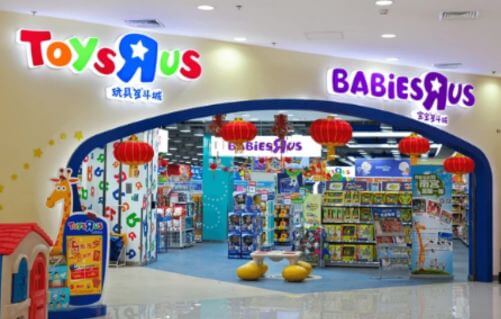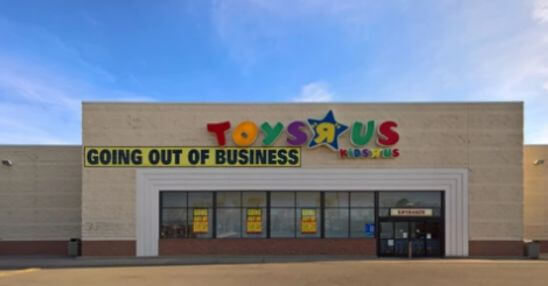For decades, Toys “R” Us was a child and parent’s favourite destination. Symbolizing a magical world of toys, games, and childhood wonder. The toy chain had more than 1,500 stores worldwide at its height, and was the one stop shop for toys, video games and baby products. But in 2017, Toys “R” Us went bankrupt, shocking many who had remembered it as a global industry giant.
The downfall of Toys “R” Us is an example of a company that could not keep up with retail changes in the face of e-commerce powerhouses such as Amazon and big box retailers such as Walmart and Target. The article discusses the reasons behind collapse of Toys “R” Us, including the company’s critical missteps, financial problems, and missed opportunities.
The Rise of Toys “R” Us: A Retail Powerhouse
Toys “R” Us was originally started in 1948 by Charles Lazarus, who had opened a baby furniture store in Washington, DC called Children’s Super Mart; Lazarus wanted to build a store dedicated to children, selling everything from cribs to toys. In 1957, he renamed the store Toys “R” Us, becoming a toy-centric supermarket.

The shop’s neon colours, iconic backward “R” sign, and a huge selection of toys were very appealing to children and adults alike. The brand grew quickly over the 1970s and ’80s, becoming the largest toy retailer in the world. The company’s slogans included “I don’t want to grow up, I’m a Toys “R” Us kid.” The company established the brand into the popular imagination.
During its golden years, Toys “R” Us did not have much competition. It was the one-stop shop for toys and it took advantage of the peak sales during the holidays, especially Christmas. Even the brand moved into the baby product market with Babies “R” Us, cementing its position as a children’s retailer.
Also Read: Uncovering the Untold Stories of Successful Brands
The Beginning of the Decline: Competition and E-commerce Disruption
While Toys “R” Us was enjoying its late-20th-century boom, the seeds of its downfall were already being sown. New competitors were entering the scene, and the retail landscape started changing completely by the 1990s. Here are some of the factors that ultimately led to Toys “R” Us’s eventual collapse:
1. The Rise of Big-Box Stores
Walmart and Target entered the toy market more aggressively in the 1990s. The big-box stores carried everything from groceries to clothing, which meant they were family one-stop shops. Most of all, they could sell toys at lower prices, because they had larger and more effective supply chains.
Toys “R” Us could not match the bargain prices of these big box retailers. Walmart and Target were able to sell Toys “R” Us for less, and customers started to prefer the ease and cost savings of shopping at these stores. Toys “R” Us thus started to lose market share.
2. The Shift to E-commerce
In the early 2000s, the rise of e-commerce further disrupted the retail landscape, with Amazon emerging as a major player. Consumers began shifting their shopping behaviours online where prices were cut down, the options were increased and home delivery was also available. Toys “R” Us, however, did not join the digital revolution immediately.
In 2000, Toys “R” Us partnered with Amazon to sell toys on its e-commerce platform. That was well-intentioned, but it did not pay off. The partnership was exclusivity, i.e., Toys “R” Us had outsourced its web presence to Amazon, instead of building an e-commerce solution of their own. When Toys “R” Us finally understood the necessity of its website, it was too late. Amazon already owns a major share of the online toy market.
Toys “R” Us’s reluctance to invest in its e-commerce capabilities allowed competitors to thrive in the online space, further eroding its market share.
3. Changing Consumer Behavior
Toys “R” Us not only struggled with competition from big-box retailers and online retail outlets, it could not adapt to changing t consumer preferences. Digital entertainment, and the increasing popularity of smartphones, tablets, and video games, drew children away from traditional toys. As children spent more time on devices, the market for action figures, dolls and board games began to declined.
Toys “R” Us, which had built its business around traditional toys, was slow to adapt to this shift. The company continued to make toys in the physical realm without making any significant inroads into the growing space of digital entertainment and games.
Financial Troubles: A Mountain of Debt
Competition and changing consumer habits contributed to Toys “R” Us’ failure, but most importantly the company was crippled by its debt load. Toys “R” Us, was acquired by a consortium of private equity funds in 2005 through a $6.6 billion leveraged buyout by Bain Capital, KKR & Co., and Vornado Realty Trust.
A leveraged buyout (LBO) is a transaction in which a company is purchased with a significant amount of borrowed money, leaving the company with large debt obligations. Toys “R” Us was in debt because of the LBO, amounting to close to $5 billion. The company found it difficult to repay this debt, while still attempting to survive in a challenging retail market.
Toys “R” Us needed to invest so much of its cash flow toward paying down debt that it did not have a lot of room to invest in the business. The company could not modernize its stores, upgrade its website, or improve its customer experience. That debt had put Toys “R” Us in a tough spot when it came to trying to stay competitive in a fast-changing retail marketplace.
Mismanagement and Strategic Failures
Alongside its financial distress, Toys “R” Us lacked management and strategy. The management of the company had been unable to formulate a unified approach to address its increasingly complex situation over the years.
One of the major missteps about the company was that it never invested in its stores. Just as Walmart and Target were updating their stores and presenting better shopping experiences, Toys “R” Us stores became uninteresting. Shoppers found the stores overcrowded, unorganized, and lacking in the kind of interactive displays that might have added a little fun to the shopping experience for children.
Toys “R” Us did not even benefit from the brand identity. The brand had established a powerful emotional relationship with customers, but failed to make much use of this relationship online. The brand’s mascot, Geoffrey the Giraffe, remained a beloved figure, but they did not invest in digital marketing or social media enough to connect with a new generation of parents and children.
The Final Days: Bankruptcy and Store Closures

By 2017, Toys “R” Us was struggling to stay afloat. Competition from e-commerce, big-box stores, and its staggering debt burden had worn them down. Toys “R” Us filed for Chapter 11 bankruptcy proceedings in September 2017, in the United States. It believed that, through restructuring debt and shuttering low-performing stores, it could come out of bankruptcy as a thinner, more competitive company.
Unfortunately, the efforts to turn the company around were unsuccessful. Toys “R” Us was unable to secure the financing it needed to restructure, and in March 2018, the company announced that it would be closing all of its U.S. stores. The closures marked the end of an era for a brand that had once been a dominant force in the toy industry.
The bankruptcy and subsequent liquidation led to the closure of more than 800 U.S. stores, affecting thousands of employees and leaving a significant void in the toy retail market.
Also Read: The Rise and Fall of Blockbuster: A Failure Story of Missed Opportunities and Market Shift
The Impact of Toys “R” Us’s Collapse
The Toys “R” Us collapse had wide-reaching effects, especially in the toy market. Toys “R” Us had long been a major strategic support for toy companies, offering massive retail coverage and marketing resources. When the store closed, manufacturers were scrambling to find another store in which to distribute their toys.
Toys “R” Us’s failure also had a significant impact on the retail landscape. The company bankruptcy highlighted the difficulties that how tough traditional retailers have it competing with a fast-changing e-commerce landscape. Other brick-and-mortar retailers have since been forced to move or face the same fate.
The Lessons from Toys “R” Us’s Failure
The fall of Toys “R” Us offers valuable lessons for businesses, particularly those in the retail sector. Here are some key takeaways:
1. Embrace E-commerce Early
It was Toys “R” Us’s inability to build a sophisticated e-commerce platform that let competitors such as Amazon dominate the online toy market. Businesses must start embracing digital transformation at an early stage and begin investing in technologies that will define the future of their industry.
2. Adapt to Changing Consumer Behavior
Toys “R” Us did not recognize changing consumer trends very early, such as the turn toward digital entertainment and shopping online. businesses must keep pace with what consumers want and adjust their strategy to adapt to changes in demand.
3. Avoid Overleveraging
The massive debt burden from the leveraged buyout ultimately crippled Toys “R” Us. Businesses should be cautious about


